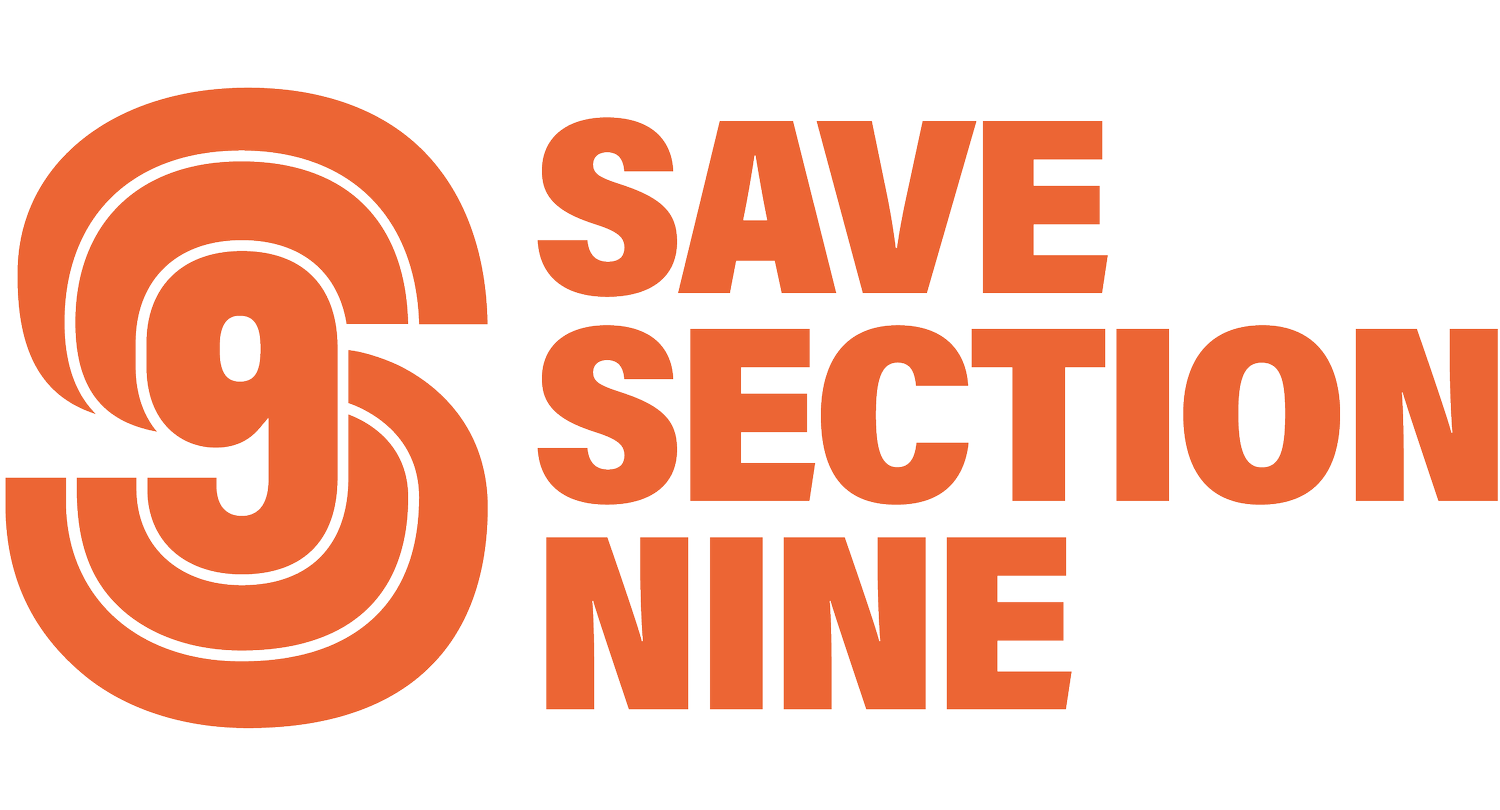Public Housing in the United States
In the United States, millions of people call Section 9 public housing home. The New York City Housing Authority (NYCHA) has the largest housing stock in the united states with over 400,000 tenants. Public housing units in New York and all over the country are falling into a state of decay due to racist and classist neglect and federal disinvestment, and privatization plans like Rental Assistance Demonstration (RAD) and The Blueprint for Change threaten to displace existing residents. Save Section 9 believes in the promise of public housing, and believes existing residents have a right to housing, and right to remain in their communities.
What is Section 9 public housing?
Early experiments of public housing began in New York City following the Great Depression. Section 9 of the 1937 US Housing Act established public housing as a federal program. Public housing was established to provide decent and safe rental housing for low-income families, the elderly, and persons with disabilities. Public housing comes in all sizes and types, from scattered single-family houses to high rise apartments for elderly families, and while median incomes are low, some residents are higher income earners, but remain in public housing due to prohibitive private market costs and family and community ties.
Today, public housing in New York City and across the country overwhelmingly serves Black and Brown tenants, female-headed households, many aging tenants and tenants who are disabled. This is signficant given that these are the kinds of households that are more prone to homelessness and housing insecurity because of structural racism, classism, sexism, ageism, and ableism.
Disinvestment in public housing is a choice by our government not to invest in housing these households, and it has led to deteriorating living conditions for tenants. Despite well-known dilpadation, waiting lists for public housing are still long, and at 254,827 families, the list is many times over the length of the Section 8 waiting list (17,200).
Why does Section 9 public housing matter?
Section 9 public housing residents have the strongest tenants’ rights in the country, known as the 964 regulations or ‘the regs’. The official purpose of these regulations is “to recognize the importance of resident involvement in creating a positive living environment and in actively participating in the overall mission of public housing” (§ 964.1 Purpose). This includes the creation of Resident Councils and other governing bodies, as well as options for resident management. Learn more here.
Section 9 public housing is significantly different than other types of subsidized housing programs like Section 8 , HOPE VI, RAD, and the low-income housing tax credit. Section 9 relies on direct outlays funding for repairs and operations - this is money the federal government specifically puts money aside for public housing residents. This is the safest and most cost efficient model that currently exists.
Other newer policies rely on mixed finance mechanisms (speculative debt and financing with public money), and the involvement of private and nonprofit sector partners, which introduce new risks to tenants and are costlier. However, “despite billions of dollars spent and years of experimentation with various policy approaches, today the United States still has a housing affordability crisis” (Rosan, 2015). Meanwhile, the primary beneficiaries of this shift are predominantly white, wealthy households who do not live in public housing or rely on subsidized housing programs in securing their own housing needs (Cushing and Crowley, 2002).
Newer programs also do not provide the same depth of affordability as public housing. This means they serve higher-income low-income households. Thus, the shift towards these newer programs has lead to greater housing scarcity for extremely- and very-low income households like many who rely on Section 9 public housing (Vale and Freemark, 2019).
What does Section 9 public housing mean to residents?
How did we get here?
Since the 1980s, federal funding for NYCHA has continuously decreased. During Reagan’s presidency, HUD’s budget dropped to $40 billion, 50% less than in 1976. By the 1990s, a Republican Senator from South Carolina helped pass what became known as the Faircloth Amendment, which stated that public housing authorities can never operate more units than they did in 1999, the year the amendment took effect. In other words, it has been illegal to build new public housing for the last 22 years. At the same time, NYCHA’s funding has continued to drop at an astounding rate: since 2001, the budget has been cut by $2.7 billion.
Overall, this has amounted to drastically deteriorating living conditions in public housing and a complete lack of any political will to fix it. There are approximately 176,000 apartments spread over 325 complexes which are in dire need of $32 billion to overhaul the very foundations of buildings: from roofs to heating to pipes. No one knows this better than NYCHA’s 600,000 tenants.
Additional Resources on
Section 9 Public Housing
History of Public Housing.
This video explains the history of Public Housing and why it was created.
Housing Justice is Racial Justice
This video from NPR details the history of racism that is part and parcel of housing in America.
At Home in the City - Making Housing Affordable - Public Housing
The first housing authority in the country and started in 1935, NYCHA was formed before the Federal Housing Program.
Growing commerce and reducing homogeneity, NYCHA diversifies New York City Neighborhoods and reduces the effects of gentrification.
Developments in the New York City Housing Authority (NYCHA)
over 400,000 people live in Public Housing with over 300 buildings in its Portfolio
Video showing how big is NYCHA




